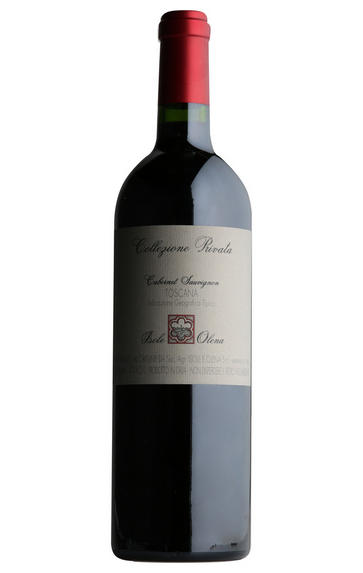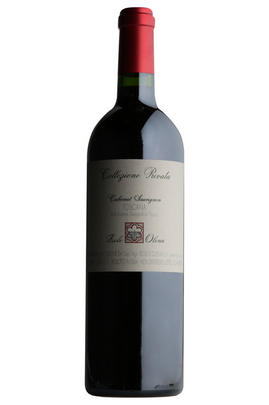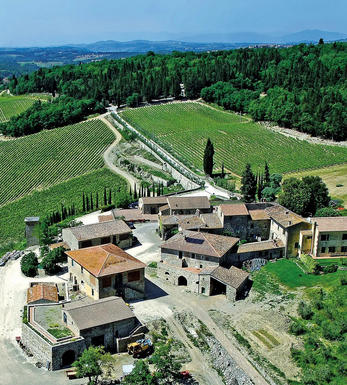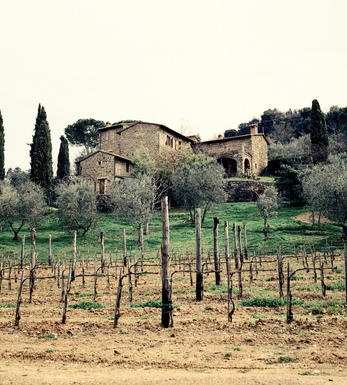
2017 Collezione Privata, Cabernet Sauvignon, Isole e Olena, Tuscany, Italy

Critics reviews
The 2017 Cabernet Sauvignon Collezione Privata is another fabulous wine from Paolo De Marchi. Readers must be patient with the 2017, as it is a very young wine. History has taught me the Cabernet here ages exquisitely, but it needs time. That should be the case here as well. Opening a bottle anytime soon is likely a primarily academic exercise.
Drink 2027 - 2042
Antonio Galloni, Vinous.com (September 2021)
Aromas of blackberries, blackcurrants, mint and sage follow through to a full-bodied palate with plenty of polished and tense tannins. Hazelnuts at the end. Give this time to come together. Fresh and balanced for the hot vintage.
Drink from 2024 onward
James Suckling, jamessuckling.com (August 2021)
About this WINE

Isole e Olena
The Isole et Olena Estate, run by Paolo de Marchi for 45 years, is a Tuscan property that has seen a dramatic rise in quality over the last few decades. Paolo's family, originally from Piedmont, purchased the estate in the 1960s. His attention to detail in both the vineyard and the winery was the driving force that turned quality around. The estate was purchased by the EPI group recently, who have expertise in Tuscany, also owning the famed Montalcino estate Biondi-Santi.
The wines have Cepparello at their head, a barrique-aged Sangiovese classified as an IGT - because at the time of its creation in the 1980s a wine comprising 100% Sangiovese could not legally be labelled as Chianti. There is a Chianti Classico and a Vin Santo, as well as some excellent wines from the Collezione de Marchi label, including a Syrah called Eremo, a Cabernet Sauvignon and a Chardonnay.

IGT Tuscany
IGT (Indicazione Geografica Tipica) Tuscany is a wine classification from Italy's Tuscany region. It is one of the official wine classifications recognized by the Italian government. IGT is a step below the highest classification, DOCG (Denominazione di Origine Controllata e Garantita), and above the DOC (Denominazione di Origine Controllata) level.
The IGT classification was introduced in 1992 to allow winemakers more flexibility in grape varieties and employ winemaking techniques while still ensuring a certain level of quality and geographical indication. This classification gives winemakers more freedom to experiment and innovate, deviating from the strict regulations of the DOC and DOCG classifications.
IGT Tuscany wines can be produced throughout the entire region of Tuscany, encompassing various sub-regions and terroirs within the area. This classification allows winemakers to use traditional Tuscan grape varieties, such as Sangiovese, and non-traditional grape varieties, including international ones like Cabernet Sauvignon, Merlot, Syrah, and others.
The IGT Tuscany classification gives winemakers the flexibility to create wines that showcase the unique characteristics of their specific vineyards and winemaking styles. It allows for experimentation with blending different grape varieties, using innovative winemaking techniques, and exploring new regional vineyard sites.
IGT Tuscany wines can vary greatly, from traditional and terroir-driven expressions to more modern and international styles. This classification has played a significant role in developing Super Tuscan wines, often IGT designated and known for their high quality and international recognition.
Overall, IGT Tuscany provides a platform for winemakers in the region to express their creativity and produce wines that reflect their unique vision while maintaining a connection to the rich heritage and traditions of winemaking in Tuscany.

Cabernet Sauvignon Blend
Cabernet Sauvignon lends itself particularly well in blends with Merlot. This is actually the archetypal Bordeaux blend, though in different proportions in the sub-regions and sometimes topped up with Cabernet Franc, Malbec, and Petit Verdot.
In the Médoc and Graves the percentage of Cabernet Sauvignon in the blend can range from 95% (Mouton-Rothschild) to as low as 40%. It is particularly suited to the dry, warm, free- draining, gravel-rich soils and is responsible for the redolent cassis characteristics as well as the depth of colour, tannic structure and pronounced acidity of Médoc wines. However 100% Cabernet Sauvignon wines can be slightly hollow-tasting in the middle palate and Merlot with its generous, fleshy fruit flavours acts as a perfect foil by filling in this cavity.
In St-Emilion and Pomerol, the blends are Merlot dominated as Cabernet Sauvignon can struggle to ripen there - when it is included, it adds structure and body to the wine. Sassicaia is the most famous Bordeaux blend in Italy and has spawned many imitations, whereby the blend is now firmly established in the New World and particularly in California and Australia.


Buying options
Add to wishlist
Description
The 2017 Cabernet Sauvignon Collezione Privata is another fabulous wine from Paolo De Marchi. Readers must be patient with the 2017, as it is a very young wine. History has taught me the Cabernet here ages exquisitely, but it needs time. That should be the case here as well. Opening a bottle anytime soon is likely a primarily academic exercise.
Drink 2027 - 2042
Antonio Galloni, Vinous.com (September 2021)
wine at a glance
Delivery and quality guarantee